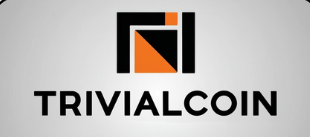What is a layer in a blockchain?
Blockchain is built in layers, each with its own job. Let’s break them down from Layer 0 to Layer 3.
Layer 0: The Backbone of Blockchain
Layer 0 is the foundation for everything—it’s like the soil where all other layers grow. This layer includes the infrastructure that blockchains rely on to exist. Examples include the internet, hardware, protocols, and data-sharing systems. It also includes systems like Polkadot and Cosmos, which allow multiple blockchains to connect and talk to each other.
Why it matters:
Layer 0 makes it possible to build and link blockchains, enabling them to work together in a broader ecosystem.
Layer 1: The Core Blockchain
Layer 1 is what most people think of when they hear “blockchain.” It’s the main network—like Bitcoin, Ethereum, or Solana. This layer handles all the essential functions, such as:
Recording transactions
Validating data
Securing the network
However, Layer 1 blockchains can face problems like high fees or slow speeds when too many people use them. That’s where the next layer comes in.
Layer 2: The Problem Solver
Layer 2 is like an upgrade that sits on top of Layer 1, making it faster and cheaper. These are often called “scaling solutions.” They process transactions separately and then send the final results back to Layer 1.
Examples:
Lightning Network (for Bitcoin): Makes payments faster and cheaper.
Polygon (for Ethereum): Handles transactions more efficiently.
Why it matters:
Layer 2 makes blockchain systems usable for large-scale applications like gaming, finance, and social networks.
Layer 3: The User-Friendly Layer
Layer 3 is where the magic happens for regular users. It includes applications that run on top of Layer 1 and Layer 2. Think of it as the interface that lets you interact with blockchain technology.
Examples:
Decentralized apps (dApps): Games, DeFi platforms, or NFT marketplaces like OpenSea.
Smart contracts: Pre-programmed agreements that automatically execute actions when conditions are met.
Layer 3 makes blockchain accessible, turning it into tools and services that anyone can use.
Now, when someone mentions blockchain layers, you’ll know exactly what they mean!
